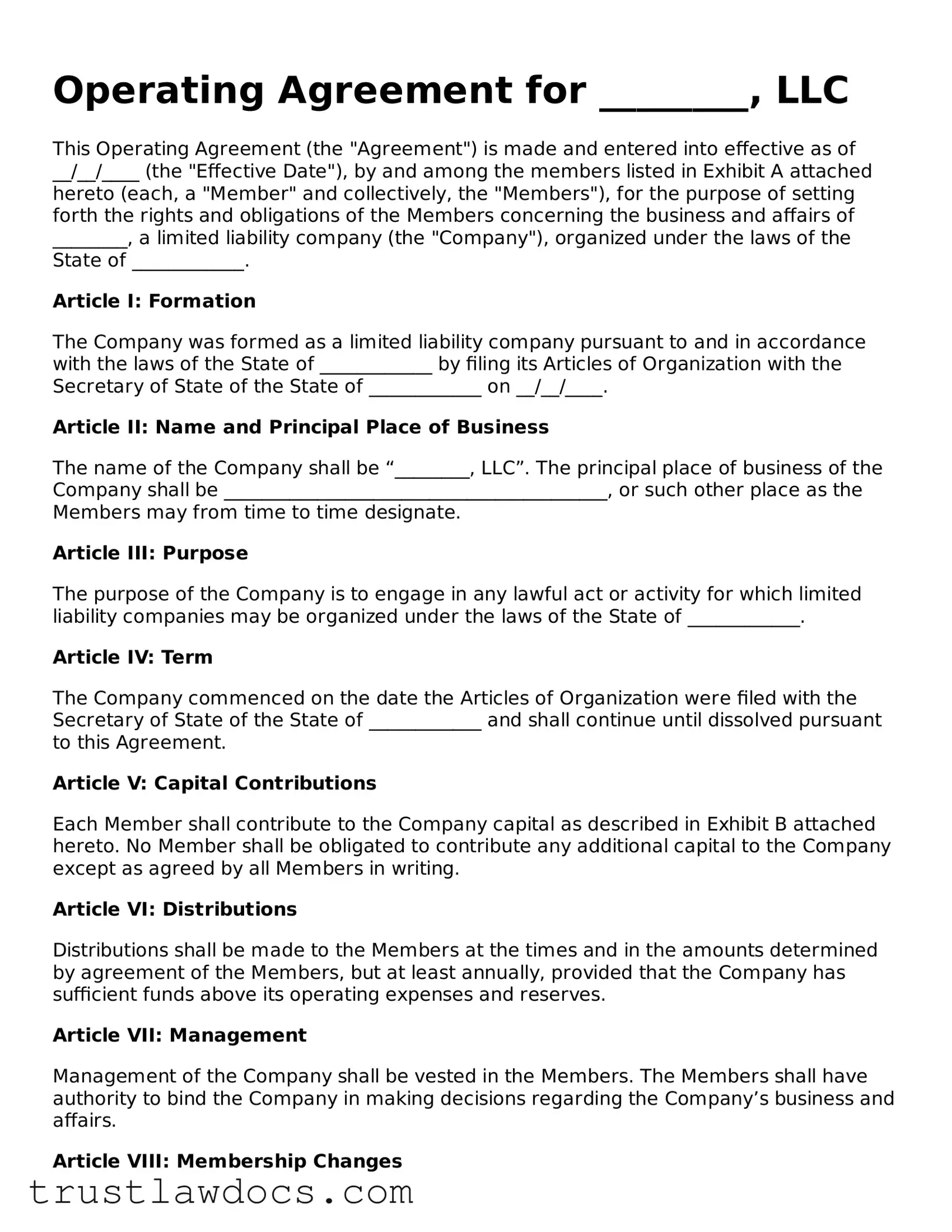Operating Agreement for ________, LLC
This Operating Agreement (the "Agreement") is made and entered into effective as of __/__/____ (the "Effective Date"), by and among the members listed in Exhibit A attached hereto (each, a "Member" and collectively, the "Members"), for the purpose of setting forth the rights and obligations of the Members concerning the business and affairs of ________, a limited liability company (the "Company"), organized under the laws of the State of ____________.
Article I: Formation
The Company was formed as a limited liability company pursuant to and in accordance with the laws of the State of ____________ by filing its Articles of Organization with the Secretary of State of the State of ____________ on __/__/____.
Article II: Name and Principal Place of Business
The name of the Company shall be “________, LLC”. The principal place of business of the Company shall be _________________________________________, or such other place as the Members may from time to time designate.
Article III: Purpose
The purpose of the Company is to engage in any lawful act or activity for which limited liability companies may be organized under the laws of the State of ____________.
Article IV: Term
The Company commenced on the date the Articles of Organization were filed with the Secretary of State of the State of ____________ and shall continue until dissolved pursuant to this Agreement.
Article V: Capital Contributions
Each Member shall contribute to the Company capital as described in Exhibit B attached hereto. No Member shall be obligated to contribute any additional capital to the Company except as agreed by all Members in writing.
Article VI: Distributions
Distributions shall be made to the Members at the times and in the amounts determined by agreement of the Members, but at least annually, provided that the Company has sufficient funds above its operating expenses and reserves.
Article VII: Management
Management of the Company shall be vested in the Members. The Members shall have authority to bind the Company in making decisions regarding the Company’s business and affairs.
Article VIII: Membership Changes
The addition or replacement of Members, and the transfer of Membership interests, shall be in accordance with the terms set forth in this Agreement and the laws of the State of ____________.
Article IX: Dissolution
The Company may be dissolved as agreed upon by the Members or as required by the laws of the State of ____________. Upon dissolution, the assets of the Company shall be distributed first to satisfy any liabilities of the Company and then to the Members in accordance with their respective interests in the Company.
IN WITNESS WHEREOF, the undersigned have executed this Operating Agreement as of the Effective Date first above written.
Members:
- Name: ________________________________________
- Address: ______________________________________
- Signature: ____________________________________
- Date: __/__/____
Exhibit A - List of Members
Exhibit B - Capital Contributions
